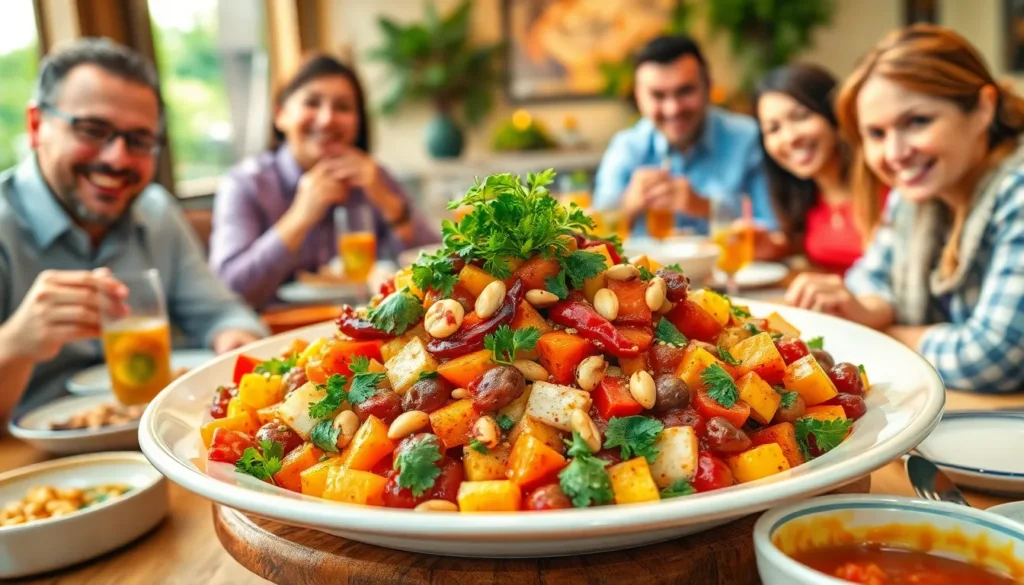Table of Contents
ToggleIn the whimsical world of culinary delights, few things tickle the taste buds quite like charuebat. This delightful dish, often shrouded in mystery, combines flavors that dance on the palate and leave diners craving more. Imagine a medley of spices and textures that not only satisfies hunger but also sparks joy—it’s like a party for your mouth!
Overview of Charuebat
Charuebat represents a rich culinary tradition that showcases a blend of regional ingredients and techniques. This dish features a range of textures, ensuring a satisfying experience with each bite. Traditionally, charuebat includes a base of savory elements, complemented by vibrant spices that accentuate the flavors.
Toppings play a crucial role in enhancing the dish’s appeal. Fresh herbs, nuts, or sauces often crown charuebat, adding depth and complexity. Each variation of charuebat tells a different story through its unique ingredient combinations, making it versatile in preparation.
Serving charuebat at gatherings fills the space with aromas that invite enjoyment. Many consider it a staple at festive occasions, appreciated for its capacity to unify friends and family around the table. Diners frequently seek out charuebat for its ability to please diverse palates.
Exploration of charuebat doesn’t stop with its flavors. Nutritional aspects also gain attention, as certain versions offer health benefits alongside flavor enjoyment. The dish often proves to be a delightful way to incorporate wholesome ingredients into meals, benefiting both the body and spirit.
Heritage and culture are integral to understanding charuebat’s significance. Communities often pass down family recipes that include cherished memories associated with the dish. Engaging with charuebat connects individuals to their culinary roots, fostering appreciation for traditional cooking methods.
Historical Background

Charuebat boasts a rich history that intertwines culinary traditions with cultural significance. The origins of this dish reveal a tapestry of flavors influenced by various regions and communities.
Origins of Charuebat
Charuebat traces its roots to ancient culinary practices, where regional ingredients combined with local cooking methods. Records indicate its first mentions in historical texts from the Mediterranean region, highlighting its use of fresh herbs and spices. Different ethnic groups adapted charuebat, inserting unique elements based on available resources. Traditional recipes emphasize the importance of communal dining, reflecting shared agricultural practices. Many families preserve their variations as treasured heirlooms, ensuring the dish remains a vital part of their culinary lineage.
Evolution Over Time
Charuebat has undergone significant changes, adapting to diverse tastes and preferences throughout the years. As trade routes expanded, new ingredients found their way into variations of charuebat, enhancing its flavor profile. Different communities introduced their traditions, leading to regional specialties. Modern interpretations often incorporate contemporary cooking techniques while honoring the foundational elements. Chefs frequently experiment with charuebat, creating fusion dishes that attract new audiences. This evolution not only maintains the dish’s relevance but also highlights its ability to unify people through shared culinary experiences.
Characteristics of Charuebat
Charuebat features a delightful combination of flavors, textures, and cultural significance. Its appeal lies in both its taste and the experience it creates during meals.
Key Features
Charuebat showcases a variety of key features. Ingredients often include savory elements and vibrant spices that create a rich flavor profile. Fresh herbs and nuts enhance the dish’s aesthetics and taste. Optimal textures arise from careful preparation methods, balancing crunchiness with tenderness. Each serving often carries inviting aromas that fill the space, making it a center of attention at dining gatherings. Nutritional benefits contribute to its appeal, allowing for the use of wholesome ingredients. Family traditions play a significant role in its preparation, with many recipes passed down through generations.
Varieties of Charuebat
Varieties of charuebat reflect the dish’s adaptability and regional influences. Each community boasts unique ingredient combinations, resulting in special interpretations. For example, some versions emphasize local vegetables while others highlight spiced meats. Traditional recipes may incorporate seasonal components, showcasing what’s available at the time. Modern iterations often blend innovative cooking techniques, presenting charuebat in new ways while respecting its roots. Festivals and communal dining gatherings typically feature different styles, adding to the dish’s celebratory nature. Each variety tells its own story, connecting diners to their heritage and culinary diversity.
Uses and Applications
Charuebat serves various culinary and cultural purposes. Its versatility makes it suitable for a range of occasions.
Culinary Uses
Charuebat shines in different meal settings, often becoming a highlight at gatherings. Combinations of local vegetables and spiced meats enhance the dish’s flavors, appealing to diverse palates. It serves as a main course or a shared appetizer, appealing to both individual and communal dining experiences. Chefs can adapt charuebat by incorporating seasonal ingredients, reflecting availability and freshness. Enjoying charuebat allows diners to experience a rich array of flavors and textures. Toppings like fresh herbs, nuts, or unique sauces elevate its presentation and taste, encouraging creative presentations in various cuisines.
Cultural Significance
Culturally, charuebat carries deep meaning, representing culinary heritage passed down through generations. Family recipes often reflect personal traditions and regional practices. Celebrating with charuebat strengthens bonds among friends and family during festive occasions. Its communal nature emphasizes shared values and agricultural practices, fostering a sense of unity. Many communities honor their unique variations of charuebat, creating a diverse landscape of regional specialties. Events like festivals highlight its central role in promoting cultural identity and heritage, allowing people to connect with their roots through food.
Charuebat stands out as a culinary gem that beautifully marries tradition with innovation. Its rich history and cultural significance make it more than just a dish; it’s a celebration of flavors that brings people together. Each bite offers a journey through regional ingredients and cooking techniques, reflecting the diverse stories behind its many variations.
As it graces tables during festive occasions, charuebat continues to unite friends and family, fostering connections through shared meals. This dish not only satisfies hunger but also nourishes the spirit, reminding everyone of the importance of heritage and communal dining. Embracing charuebat means embracing a vibrant culinary tradition that’s sure to delight any palate.




